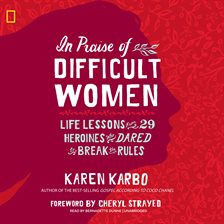


Frida excelled in soccer, swimming, roller-skating, and boxing. Her father tended to her with care, and when she was finally given the go-ahead to return to school, Guillermo prescribed sports. Learn about the final push to end polio.įrida was confined to her bed for nine months-an eternity for an active six-year-old. But these high jinks ended when she contracted polio at age six. Frida would steal fruit from a nearby orchard in lieu of attending catechism class, or sneak up on her sisters when they were using the chamber pot and shove them off. Among his five daughters, Frida-high-spirited, clever, and entertaining-was his favorite. Frida’s father, German-born Guillermo Kahlo, was one such dad. To be appreciated and accepted by the first man in our lives gives us confidence to march that self out into the world, to feel that we will not be shunned for being both a woman and a complex human being.


It’s often said that girls who grow up to be women at ease with themselves had loving, nurturing relationships with their fathers. In “The Broken Column”, Kahlo’s chest is split open revealing a crumbling column in the place of her spine-a reference to injuries she sustained when hit by a streetcar at the age of 18. Years after both artists were dead, a travel squib appeared in the New York Times, which included the sentence: “Though they created some of Mexico’s most fascinating art, it’s the bizarre Beauty-and-the-Beast dynamic that has captivated the world and enshrouded both figures in intrigue.” Frida and Diego married for the first time in 1929, divorced in 1939, remarried in 1940, and remained wed until Frida’s untimely death in 1954, at the age of 47. Or that she would “enjoy” a passionate, tumultuous marriage to Mexico’s most famous muralist and womanizer, Diego Rivera. Until the day Frida (she dropped the “e” in 1922) was hit by a streetcar-literally, at the age of 18-nothing in her upper-middle-class background would disclose her future: that she would one day become Mexico’s most celebrated painter, a sexy international art megastar and pop icon who would produce unnerving masterpieces that would hang in the world’s major museums. Magdalena Carmen Frieda Kahlo y Calderón was born in Coyoacán, a tidy suburb of Mexico City, in July 1907. It was part of what made her difficult: She forced people to look at her, to share her feelings, when they would prefer to look away. She was a playful exhibitionist, a fervid and erotic provocateur dispatching updates from the land of female suffering. Regardless of the degree to which she was suffering, Frida Kahlo always enjoyed the spectacle of herself.


 0 kommentar(er)
0 kommentar(er)
